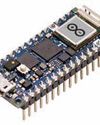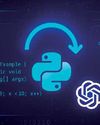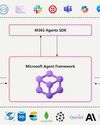कोशिश गोल्ड - मुक्त
A Peek into the Consensus Mechanisms of Open Source Blockchains
Open Source For You
|May 2025
Explore three different consensus algorithms, comparing their tenets, advantages, and disadvantages, while also going into how they have influenced the development of open source blockchain ecosystems.
-

Consensus algorithms allow blockchain networks to operate safely and reliably. In a decentralised network, these algorithms guarantee that all users concur on the blockchain's present state. Three consensus mechanisms have become popular in the context of open source blockchains: Byzantine Fault Tolerance (BFT), Proof of Work (PoW), and Proof of Stake (PoS).
Consensus in blockchains
The protocols that allow blockchain networks to agree on a single data value or version of the blockchain are known as consensus algorithms. The decentralised ledger’s continuity, security, and integrity are all vitally dependent on them. The decentralised nature of blockchain would not be feasible without consensus, potentially resulting in vulnerabilities and inconsistent data. Data is updated and maintained by a single person (such as a database administrator) in conventional centralised systems. Decentralised systems, on the other hand, do not need a central authority because they rely on consensus processes to guarantee that all participants agree on the authenticity of the data.
Decentralisation, security, fault tolerance and consistencies are vital characteristics of consensus algorithms.
Decentralisation: Here, a central authority is not required to verify transactions. Authority, control, and data are dispersed throughout a network as opposed to being centralised in one organisation or person. Decentralisation eliminates single point of failures._
Multiple autonomous nodes take part in a decentralised consensus method, which makes it resistant to attacks or failures of individual nodes. Decentralisation also enhances trust and transparency. No single party controls the data in decentralised consensus techniques, and the entire procedure is open and verifiable.
यह कहानी Open Source For You के May 2025 संस्करण से ली गई है।
हजारों चुनिंदा प्रीमियम कहानियों और 10,000 से अधिक पत्रिकाओं और समाचार पत्रों तक पहुंचने के लिए मैगज़्टर गोल्ड की सदस्यता लें।
क्या आप पहले से ही ग्राहक हैं? साइन इन करें
Open Source For You से और कहानियाँ

Open Source For You
The Role of Open Source in Building Modern Data Infrastructure
It's no secret that open source is emerging as the backbone of modern data infrastructure. Here’s a list of the core open source technologies used to deploy this infrastructure, along with some real-world examples and a brief on why open source matters.
3 mins
December 2025

Open Source For You
The Whispering Machines: How Open Source is Bringing Intelligence to the Tiniest Devices
Built on open source frameworks, TinyML is enabling complex machine learning models to run on the microcontrollers embedded in connected devices, bringing artificial intelligence to the very edge of the network.
3 mins
December 2025

Open Source For You
Setting Up Snort to Secure Your Network
Snort is a popular, open source intrusion detection system that monitors traffic in real time to detect malware. Here’s a detailed explanation of how to set it up on Ubuntu and test it by generating traffic from another system.
7 mins
December 2025

Open Source For You
When AI Meets DevOps to Build Self-Healing Systems
Traditional DevOps, with its rule-based automation, is struggling to work effectively in today’s complex tech world. But when combined with AlOps, it can lead to IT systems that predict failures and solve issues without human intervention.
7 mins
December 2025

Open Source For You
How to Automate Java Code Modernisation
This short guide illustrates that automating Java code modernisation with Python and OpenAI API is not just possible-it's remarkably effective.
5 mins
December 2025

Open Source For You
The Quest to Build a Quantum Computer
The road to large-scale quantum computing is long and hard, with incremental advances paving the way. But the destination is in sight.
12 mins
December 2025

Open Source For You
Job Opportunities: What's Hot in the Cloud Space?
If there's one field that refuses to slow down, it's cloud computing. Even as automation and AI reshape roles, cloud adoption continues to surge. From startups deploying microservices overnight to enterprises migrating decades of legacy systems, cloud remains the engine of digital transformation. For professionals, this means one thing: skills that live in the cloud won't come down anytime soon.
2 mins
December 2025

Open Source For You
Securing Client Identity with Post-Quantum Cryptography
Here's a quick tutorial on how to build a secure, real world client-server model that establishes client identity by using CRYSTALS-Dilithium, a post-quantum cryptography algorithm.
3 mins
December 2025

Open Source For You
Unlocking the Power of Multi-Agent Solutions with the Microsoft Agentic Framework
The Microsoft Agentic Framework is rapidly emerging as a cornerstone for developers, architects, and technology leaders seeking to build dynamic, intelligent systems powered by multiple collaborating agents. In an era where automation, distributed intelligence, and adaptive software are increasingly vital, this framework offers robust tools and features to accelerate the design and deployment of agent-based solutions.
6 mins
December 2025

Open Source For You
Apache Iceberg and Trino: Powering Data Lakehouse Architecture
Apache Iceberg is a cornerstone of any open data lakehouse, providing the transactional foundation upon which highly scalable and flexible analytics can flourish. Along with Trino, it can be used to build a robust, scalable, and high-performance data lakehouse.
4 mins
December 2025
Listen
Translate
Change font size
